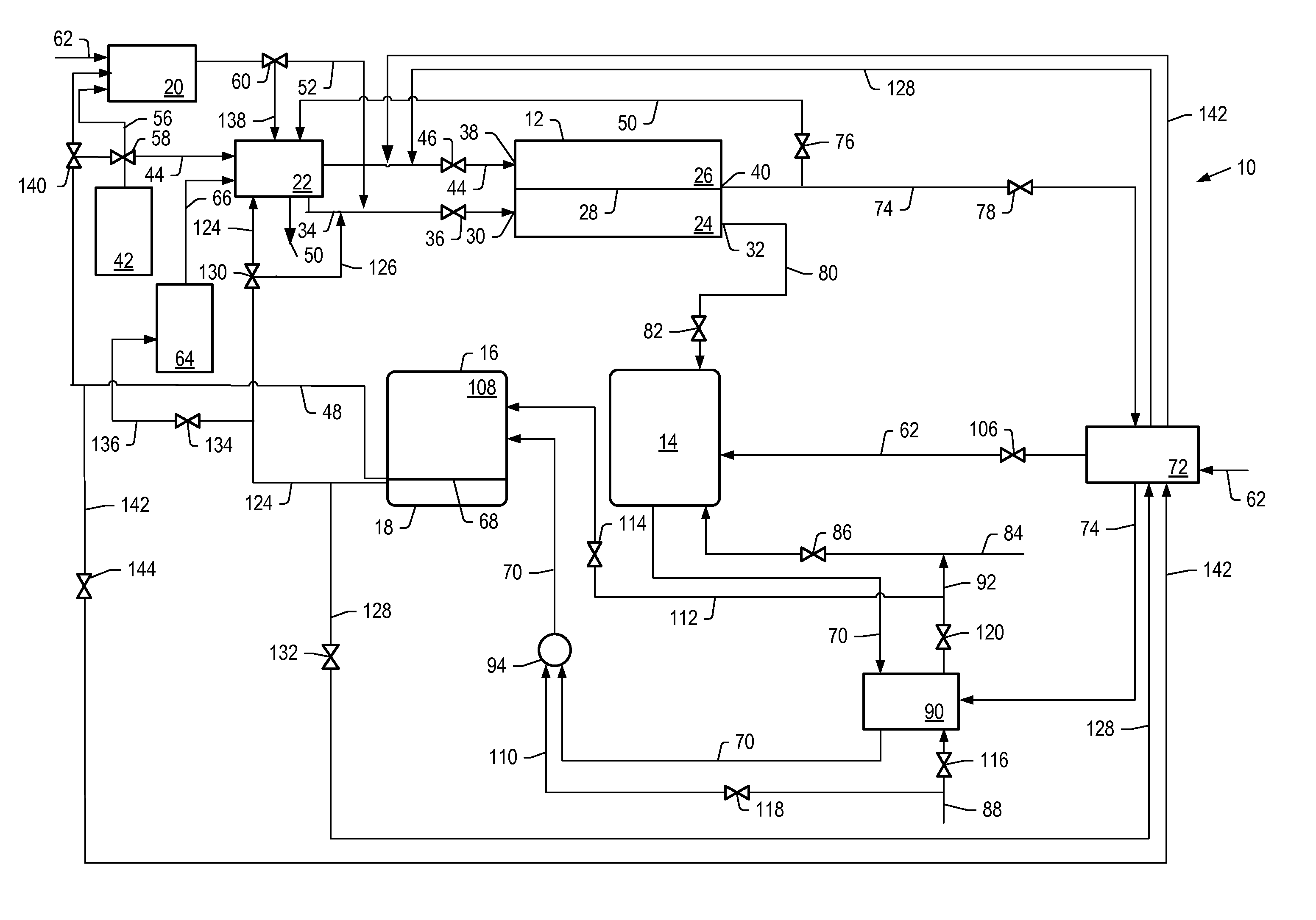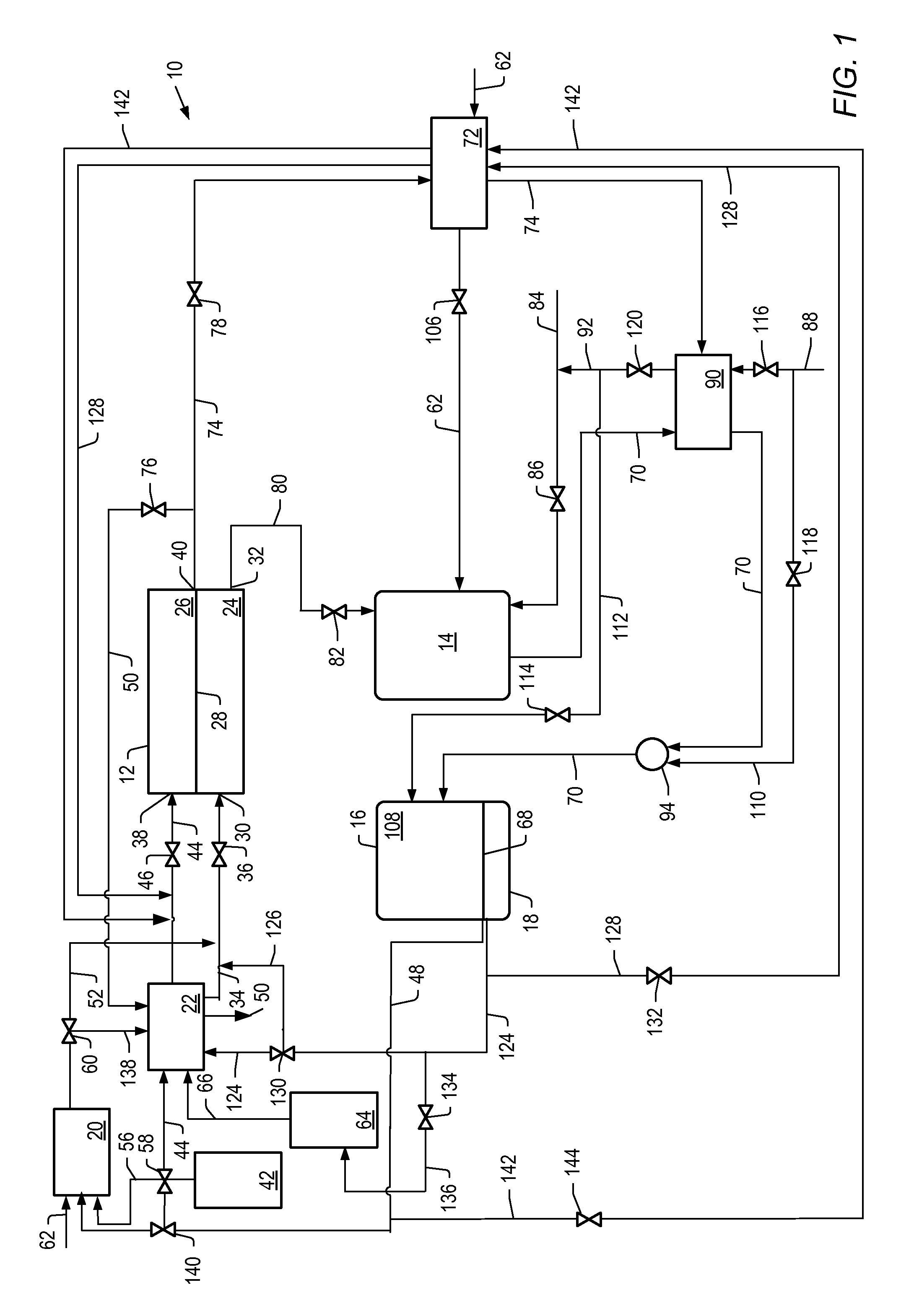Systems and processes for operating fuel cell systems
a fuel cell and process technology, applied in the direction of fuel cells, chemistry apparatus and processes, electrochemical generators, etc., can solve the problems of less hydrogen produced by the water-gas shift reaction, disfavorable water-based carbon dioxide and hydrogen production, and fuel gases containing non-hydrogen compounds such as carbon monoxide, less efficient for producing electrical power in molten carbonate fuel cells
- Summary
- Abstract
- Description
- Claims
- Application Information
AI Technical Summary
Benefits of technology
Problems solved by technology
Method used
Image
Examples
examples
[0175]Non-restrivtive examples are set forth below.
[0176]A UniSim® simulation program (Honeywell) in combination with calculations for cell potential was used to construct a detailed process simulation for the molten carbonate fuel cell systems of the present invention. The UniSim program was used to obtain material balance and energy balance data. The detailed process simulation was repeatedly solved for the different values of hydrogen utilization, and other relevant system parameters. The detailed process simulation output included detailed composition data for all process streams entering and exiting the molten carbonate fuel cell. For high temperature fuel cells, activation losses are small and the cell potential may be obtained over the practical range of current densities by considering only ohmic and electrode losses. As such, the cell potential (V) of a molten carbonate fuel cell is the difference between the open circuit voltage (E) and the losses (iR) as shown in Equation...
examples 1
[0177]The detailed process simulations described above was used to simulate cell voltage versus current density and power density formation for molten carbonate fuel cell systems described herein where the first reformer was heated by the anode exhaust, with no other heating. For example, systems depicted by FIG. 1. The heat for the second reformer was heated by exchange with the hot effluent from the catalytic partial oxidation reformer. The output temperature of the effluent from the catalytic partial oxidation reformer was increased by using the cathode exhaust to preheat the catalytic oxidation reformer air feed.
example 2
[0178]The simulation described above was used to simulate cell voltage versus current density and power density formation for molten carbonate fuel cell systems described herein where the first reformer is heated by anode exhaust and heat from a catalytic partial oxidation reformer. For example, systems depicted in FIG. 2.
[0179]For Examples 1 and 2, the molten carbonate fuel cell was operated at a pressure of 1 bara (about 0.1 MPa or about 1 atm) and a temperature of 650° C. The flow of feed to the cathode of the molten carbonate fuel cell was counter current to the flow of feed to the anode. Air was used as the source of oxygen. Values for air were used to produce a molar ratio of carbon dioxide to molecular oxygen of 2 at various hydrogen utilizations. The percent hydrogen utilization for the molten carbonate fuel cell, operating conditions of the first and second reformer, steam to carbon ratios, and percent conversion of benzene to hydrogen for Example 1 and 2 simulations are li...
PUM
| Property | Measurement | Unit |
|---|---|---|
| temperature | aaaaa | aaaaa |
| carbon number | aaaaa | aaaaa |
| molar ratio | aaaaa | aaaaa |
Abstract
Description
Claims
Application Information
 Login to View More
Login to View More - R&D
- Intellectual Property
- Life Sciences
- Materials
- Tech Scout
- Unparalleled Data Quality
- Higher Quality Content
- 60% Fewer Hallucinations
Browse by: Latest US Patents, China's latest patents, Technical Efficacy Thesaurus, Application Domain, Technology Topic, Popular Technical Reports.
© 2025 PatSnap. All rights reserved.Legal|Privacy policy|Modern Slavery Act Transparency Statement|Sitemap|About US| Contact US: help@patsnap.com



